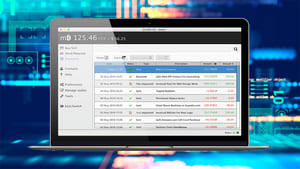Coding, Decoding and Reasoning: why is it used and the different types
Coding, decoding and reasoning are intrinsic as well as interconnected concepts used in the field of computer science, mathematics and other aptitude and analytical disciplines. This is an important domain since the performance in these zones is the key factor taken into account during the hiring of candidates, as well as used in major competitive exams for higher education. Here is a brief overview of each of the components:
- Coding: Converting information from one format to another, this section deals with encrypting words, and numbers in specific codes or patterns. In computer science, coding is usually referred to as programming languages, however, coding also means converting messages by encoding them into encrypted codes.
- Decoding: In this process, you translate coded information back to the original format, that is, decrypting the given format to the original format. It also means deciphering or the ability to understand an encrypted secret message to the actual message.
- Reasoning: Reasoning involves using deduction and analytical skills to solve complex problems. This is designed to measure the aptitude of a person logically and come up with creative solutions.

Crash Course on Blockchain & Bitcoin Trading for Novice 2019
Last Updated: 2022-04-21
Learn the key concepts around Blockchain and Bitcoin.
Why are Coding, Decoding and Reasoning used?
Aptitude skills are essential for candidates to clear rounds of interviews, and succeed in their job hunting, and these skills are used in competitive exams to analyse the potential of candidates. They are used in entrance exams of every job prospect, to accurately measure the potential of the candidate.
- They are used to effectively communicate encrypted sensitive data (for security reasons), and compression reduces the data to be transmitted.
- The reasoning is used to find problems and help the organisation to come up with data-driven decisions, fix the bugs and optimise performance.
- They are used to save time by automating repetitive tasks and streamlining the workforce.
- They are used to accurately and fairly assess the candidates and shortlist the prospective employees from the pool of candidates.
- They are also used to innovate new technological inventions.
Different types of Decoding-Coding:
- Letter Coding: when you encode or decode messages using ciphers, that replace a letter with other character formats like numbers, letters or symbols. The types of letter coding are:
- Caesar Coding shifts each letter by a specific number of places in the alphabet.
- Vigenère Cipher is a method of encrypting alphabetical text, where the cipher alphabet is changed regularly during the encryption process. Once the priming key is decided (which is the first alphabet added to the beginning of the message), the sender encrypts the message by writing the plain text in one line and the priming key under it, and then the rest of the plain text is written as it is in the priming key column, only that it is shifted one place to the right.
- Playfair Cipher uses a grid to replace letters where each pair of letters is replaced by another pair of letters in the grid that are in the same row or same column.
- In Rail Fence Cipher, the message is written in a zigzag manner across multiple lines.
- Number Coding: the candidate has to guess observe and guess the hidden code of two or more sets of numbers. Common types of Number Coding include:
- Binary Coding is where a series of 0s and 1s represent letters and numbers or other characters.
- ASCII code is a standardised system representing characters like letters, numbers and other symbols using numbers, and each character is assigned a unique code to represent characters in a message.
- Base64 code uses 64 characters for binary data.
- Mathematical operations are employed to decode messages in encryption algorithms.
- Substitution Coding: it substitutes particular objects to code names and correct objects have to be guessed to crack the pattern.
- Mixed Letter Coding: each letter is replaced with a different symbol or letter, and symbols are used differently for each letter in the message. One common example of mixed letter coding is Morse code, where a combination of dots and dashes represent letters, numbers, and other characters. Another example is the Polybius square, which uses a grid of letters to encode messages. Each letter is represented by a pair of numbers that correspond to its position in the grid.
Learnfly offers several professional courses to develop analytical skills and perform better in competitive aptitude tests. Enroll today, and be ahead of the herd.











